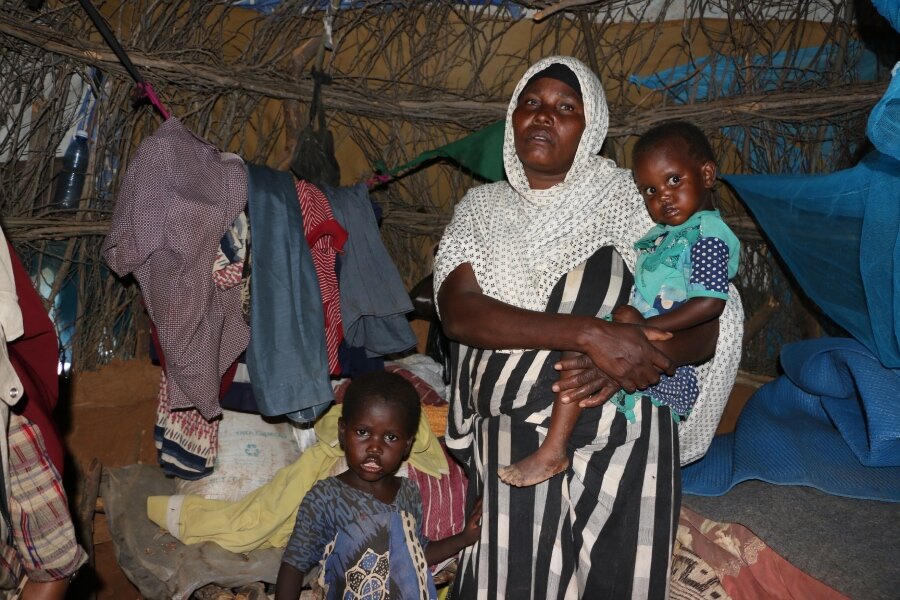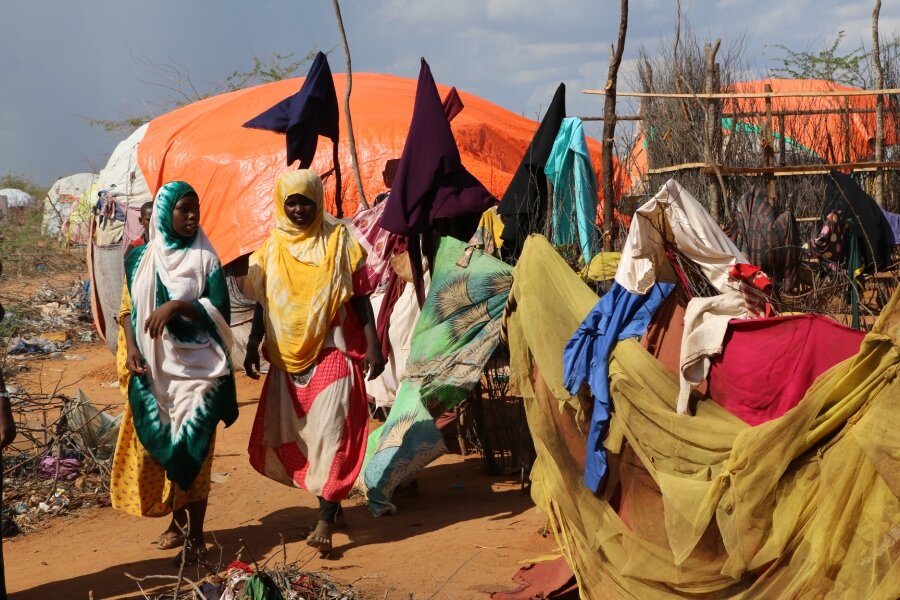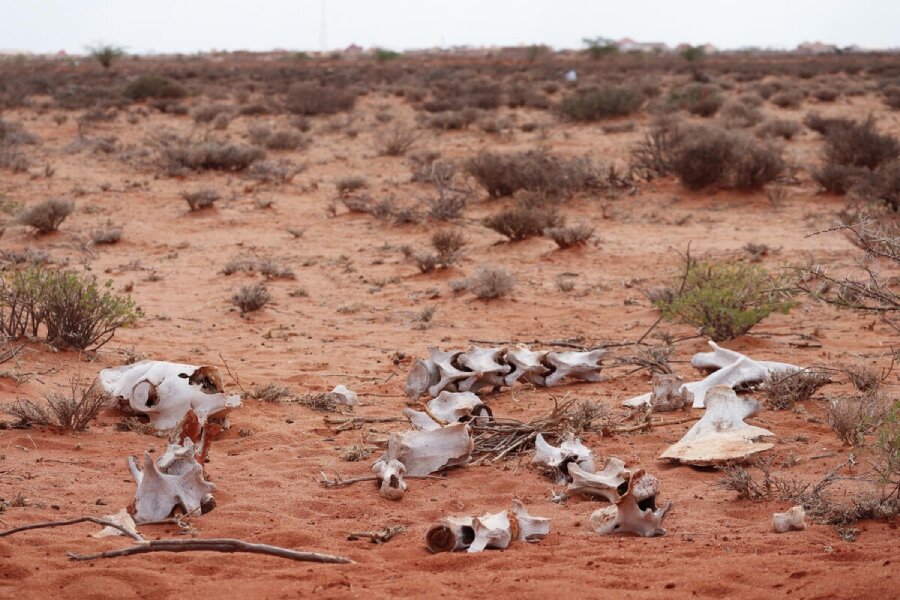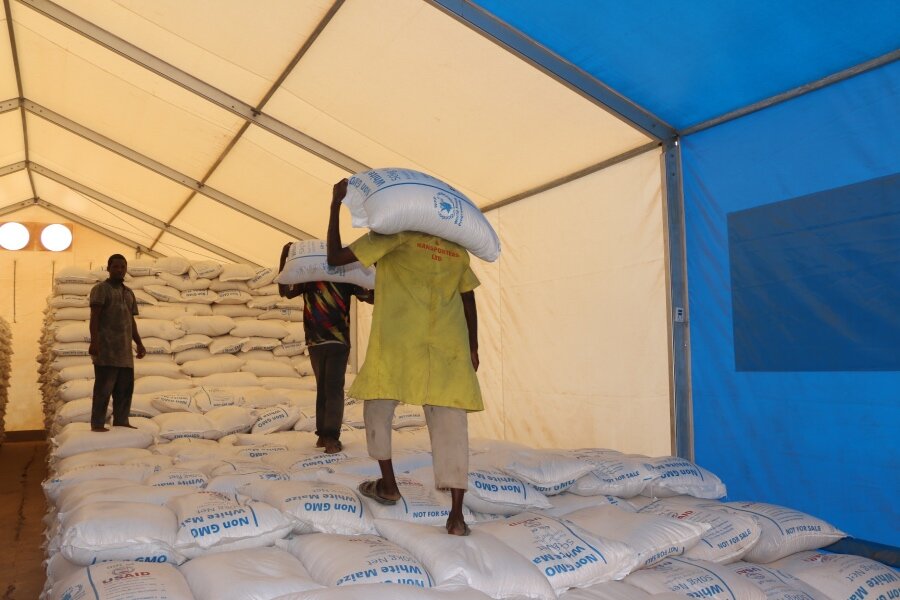
Jamilla Hassan's family once lived off rich farmland in the Lower Juba region of south-west Somalia. But a severe drought from five poor rainy seasons left them staring at empty grain stores and dusty fields littered with carcasses of livestock, once their source of meat and milk.
"We haven't been able to harvest enough grain to feed ourselves for the past two years," says Jamilla. "The land is bare and even the hardy sorghum - our staple crop - could no longer survive the dry spells."
Last October, with skies showing no signs of rain and nothing left to feed their six children, she and her husband abandoned their home to make a perilous journey through conflict-hit parts of Somalia, in search of humanitarian assistance.
Like tens of thousands of other Somalis, they found it in northeastern Kenya's overcrowded Dadaab refugee camps.
"We rode in the back of a truck for four days and nights, crossing roadblocks manned by armed people," recalls Jamilla. "It was a terrifying trip, but we knew that staying would mean facing hunger and escaping meant braving a risky journey."

Today, she and her family count among more than 350,000 Somalis living in Dadaab - including those who arrived in earlier waves - who have fled a toxic mix of searing drought and conflict that have devastated their homeland. Together, they account for more than half the roughly 600,000 refugees the World Food Programme (WFP) assists across Kenya.
The climate factor
While heavy rains have finally arrived in Somalia and other countries in the Horn of Africa, the damage has been done. The region's worst drought in more than four decades has killed millions of livestock and tens of thousands of people - and left an estimated 22 million others facing severe hunger.
A new study suggests the drought would likely not have happened without human-caused climate change, with higher temperatures making the soil and pasture in the region much drier than normal.
At Dadaab, WFP's support to new refugees like Jamilla comprises cereals, pulses and vegetable oil. Through our partners, we are also treating malnutrition in pregnant and breastfeeding mothers as well as children under 5 - including Jamilla's youngest - using fortified supplements.
But as more Somalis pour into Dadaab, their numbers are further stretching WFP's already underfunded refugee response in Kenya. Thanks to support from the United States, we have so far avoided deep cuts; Dadaab's residents currently receive about 80 percent of the usual food rations.

Without new resources, however, avoiding further cuts will be a struggle. Already, Dadaab's latest influx will increase WFP's operational costs by an additional US$3 million over the next six months.
"We are doing everything we can to continue providing food assistance to all refugees, including the nearly 100,000 who have come to Dadaab since last September," says WFP's Dadaab Office Head Sarah Borchers. "But if we don't secure new resources to meet the increased needs, food will run out much sooner."
Filled to the brim
Already, Dadaab's three camps (Dagahaley, Hagadera, and Ifo) are filled to the brim, home to nearly twice the population they were designed for.
New families are either crammed with relatives into tiny mud homes with tin roofs, or constructing makeshift shelters on the outskirts of the camps out of sticks, plastic tarp, cartons or rags. These colourful dome-shaped structures randomly dot the scrubland. Newly constructed communal latrines and water points line the only access road to the sprawling shanty settlements.
Under a searing sun and unrelenting heat, women, children and men huddle for shade under temporary canopies. There is little to do here, yet Jamilla is optimistic, despite the harsh conditions.

"I feel relieved as we have food and the children will have the opportunity to attend school here," she says.
But there is little reprieve from the weather. After months of drought, heavy rains and flash floods have swept across Somalia and Kenya in recent weeks, killing more livestock, destroying homes and further imperiling fragile communities.
"Extreme weather events are not slowing down - the population is exhausted from battling a debilitating drought, and now wading through life-threatening flood waters," says WFP's Borchers. "Now, more than ever, we need donors to step up and support people like Jamilla, who are enduring a climate crisis they did not create."
WFP urgently requires US$45 million to meet the minimum food needs of all refugees in Kenya for the next six months. Food assistance to refugees continues thanks to the generosity of Belgium, Canada, the Czech Republic, Germany, Italy, Japan, the Republic of Korea, Norway, Slovenia, Switzerland, the United Kingdom and the United States.






